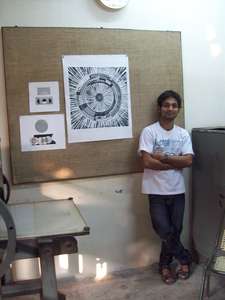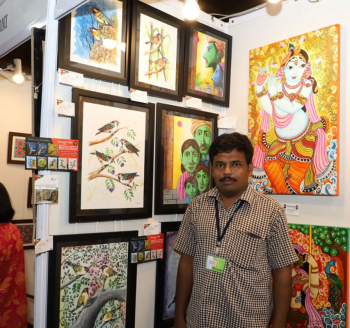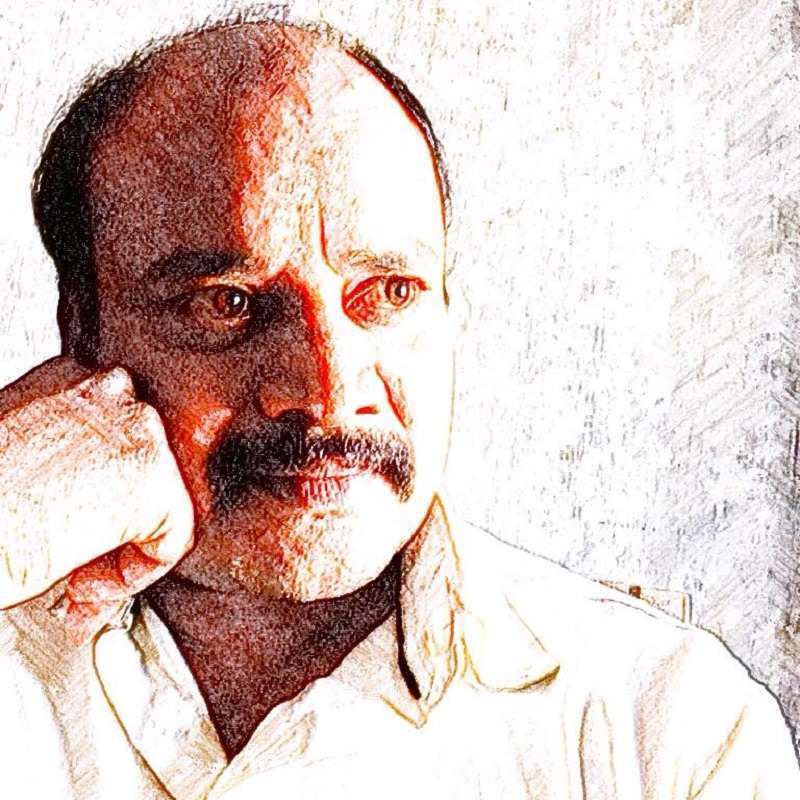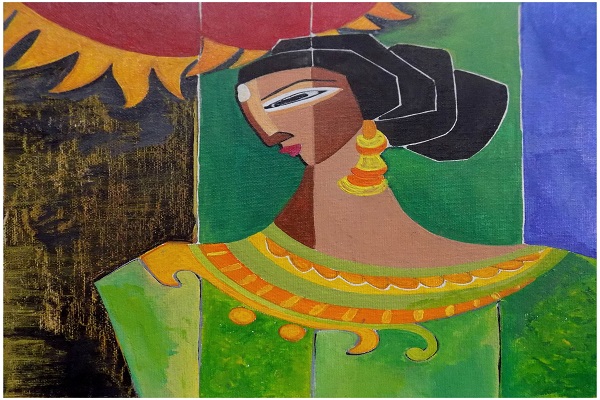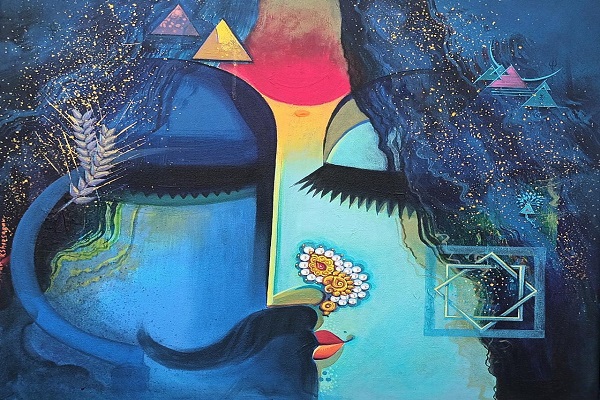
The rise of online art galleries has made Indian paintings more accessible to a wider audience, revolutionizing the art world. These virtual platforms serve as a gateway to the captivating realm of Indian art, allowing enthusiasts to explore and collect masterpieces from ancient traditions to contemporary expressions. Indian art holds a special place with its rich history, diverse traditions, and vibrant aesthetics. Previously, appreciating and collecting Indian art required physical visits, but online galleries have changed that, offering a digital window into this mesmerizing world.
Indian paintings epitomize the country’s heterogeneous cultural legacy, with each region possessing its own artistic conventions, methodologies, and motifs. Mughal miniatures, Rajasthani art, and Tanjore paintings are merely a few examples of the prodigious diversity inherent in Indian art. Online platforms have provided opportunities for established and emerging Indian artists to gain recognition globally. Artists can now break geographical barriers, connecting with a broader audience and finding visibility they may have previously struggled to achieve.
The convenience and accessibility of online galleries have democratized Indian art. Users can easily navigate through different categories, genres, and themes, with detailed descriptions, high-resolution images, and virtual exhibitions offering a comprehensive understanding of the artworks. Collectors can browse through an extensive selection, compare prices, and make informed purchasing decisions. Secure transactions ensure a seamless experience, eliminating the need for physical visits to galleries or auctions.
In essence, digital exhibition spaces have revolutionized the modalities of admiration and acquisition of Indian art. They have mediated the chasm between creators, connoisseurs, and aficionados, disseminating the rich cultural patrimony, artistic traditions, and contemporary manifestations of Indian art to a cosmopolitan public. These platforms have invigorated the recognition and conservation of India’s artistic endowment, ensuring its perpetual impact for posterity.
A Virtual Window into India's Rich Artistic Heritage
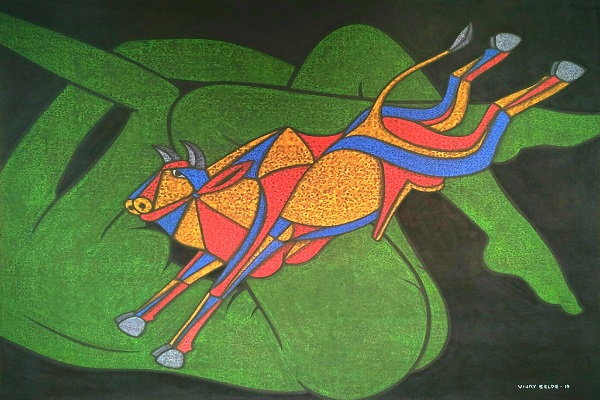
Indian art forms encompass a heterogeneous gamut of genres and styles, each with its idiosyncratic attributes and cultural connotations. Online art galleries offer a virtual aperture into this opulent artistic patrimony, enabling aficionados to peruse and admire these art forms from the amenity of their abodes. Here’s a synopsis of the salient points:
- Overview of Indian art forms: Indian art boasts a plethora of genres, including Madhubani, Tanjore, Rajput, Mughal, and Bengal Schools. Each art form has its discrete style, methodologies, and symbolism.
- Madhubani art: Originating from Bihar, Madhubani paintings are renowned for their elaborate motifs, vivid hues, and depictions of mythological and religious themes.
- Tanjore art: Hailing from Thanjavur, Tamil Nadu, Tanjore paintings feature resplendent colors, gold foils, and embedded semi-precious stones. They predominantly depict Hindu deities and mythology.
- Rajput art: Emerging in Rajasthan’s regal courts, Rajput paintings are characterized by bold colors, intricate minutiae, and portrayals of courtly life, battles, and mythology.
- Mughal art: Flourishing during the Mughal Empire, Mughal paintings showcase delicate brushwork, intricate detailing, and a focus on portraiture, nature, and courtly scenes.
- Bengal School: The Bengal School of Art aimed to revive traditional Indian art forms, incorporating elements from ancient Indian art, miniatures, and folk art. It emerged as a response to Western academic styles.
- Historical significance: Indian art is deeply entrenched in religious and mythological themes, with influences from Hinduism, Buddhism, Jainism, and more. Regional variations and cultural exchanges have also molded Indian artistic traditions.
The Advent of Online Art Galleries
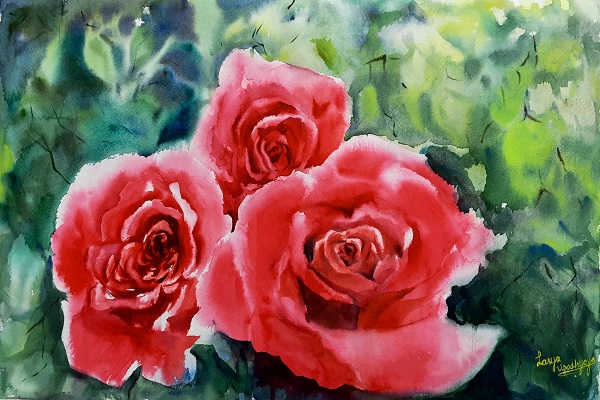
Online art galleries offer an expedient platform to explore the historical and cultural contexts of Indian art forms, fostering a greater appreciation for their splendor and significance. Through these virtual platforms, aficionados can penetrate the rich tapestry of Indian art and discern its perpetual pertinence in the contemporary world.
The emergence of online art galleries has engendered a transformative shift in the art world, revolutionizing the modalities of exhibition, transaction, and admiration of art. These virtual platforms embrace the digital era and offer a range of advantages that enhance the art browsing and collecting experience.
Online galleries provide global reach, allowing artists to showcase their work to a worldwide audience and enabling collectors to access a vast selection of artwork from different regions and styles. The convenience of 24/7 accessibility allows art lovers to engage with art at their own pace and convenience, unrestricted by physical locations or opening hours.
The ease of browsing through online galleries is facilitated by search filters, categories, and curated collections, enabling users to explore specific genres, artists, or themes. Interactive features such as zooming in on details, reading descriptions, and engaging in virtual tours provide a deeper understanding and connection with the artwork.
Furthermore, online art galleries employ sophisticated curation techniques, presenting artwork in curated exhibitions or thematic showcases, enriching the artistic journey for users. Secure transactions ensure a safe and transparent environment for collectors, fostering trust and reliability in the online art market.
In summary, online art galleries have redefined the art experience, offering global accessibility, ease of browsing, interactive features, enhanced curation, and secure transactions. As technology continues to advance, these virtual platforms are poised to shape the future of the art world.
Exploring Indian Paintings in Online Art Galleries
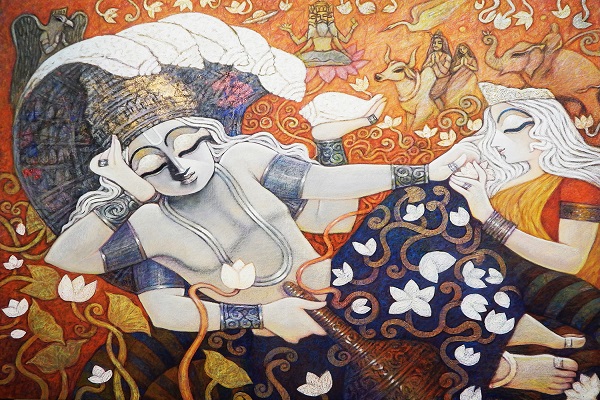
Online art galleries offer a diverse collection of Indian paintings, showcasing a wide range of subjects, styles, and mediums. These digital platforms provide a virtual window into the rich tapestry of Indian art, featuring subjects like religious and mythological themes, nature, portraits, and historical events. The artworks show different kinds of art, like the detailed Mughal miniatures, the bright Rajasthani art, and the lively Pattachitra paintings. Artists use old-fashioned mediums like watercolor and natural dyes, and also new mediums like acrylics and digital art.
Moreover, online galleries curate exhibitions and thematic showcases, bringing together renowned artists, thematic collections, and art movements. These curated presentations enable viewers to explore specific aspects of Indian art, engage with renowned artists' works, and delve deeper into themes or artistic movements. Online galleries serve as virtual museums, connecting art enthusiasts with the diverse and culturally significant world of Indian paintings.
Connecting Artists and Art Lovers
Online art galleries have revolutionized the art world by connecting artists and art lovers in unprecedented ways.
Empowering artists
Online platforms provide emerging Indian artists with a global stage to gain visibility, connect with a diverse audience, and promote their work. These platforms extend artists' reach beyond traditional gallery spaces and facilitate connections with art enthusiasts worldwide. Artists can showcase their portfolios, receive feedback, and establish collaborations, fostering their artistic growth and cultural exchange.
Facilitating collector experiences
Online galleries enhance the collector experience by offering detailed artwork descriptions, artist profiles, and secure transactions. Collectors can browse, discover, and acquire Indian paintings with ease. Detailed descriptions provide insights into the artworks' context and significance, while artist profiles offer a deeper understanding of the artist's background and style. With intuitive search filters and curated collections, collectors can explore specific genres or themes tailored to their preferences. Secure transactions ensure a safe and transparent environment for acquiring artworks, providing peace of mind to collectors.
Through these online platforms, artists are empowered, and art collectors are provided with enhanced opportunities to appreciate and acquire Indian paintings, fostering a vibrant and connected art community.
The Future of Indian Art in the Digital Age

The future of Indian art in the digital age is marked by evolving trends and the preservation of cultural heritage through online platforms.
Evolving trends
Online art platforms are embracing innovations such as virtual reality exhibitions, AI-driven recommendations, and interactive experiences. Virtual reality allows viewers to engage with art in immersive environments, while AI algorithms offer personalized recommendations, expanding artistic horizons. Interactive features like augmented reality and online workshops create dynamic and engaging experiences.
Preserving cultural heritage
Online galleries play a crucial role in preserving and promoting India's artistic heritage. Digital archives ensure artworks are documented and accessible, while online platforms serve as educational resources, providing in-depth information about Indian art. They facilitate global outreach, allowing Indian art to reach a wider audience and gain recognition on a global scale.
By embracing technological advancements and preserving cultural heritage, online platforms shape the future of Indian art, fostering innovation, connectivity, and appreciation for India's rich artistic legacy.
End Note
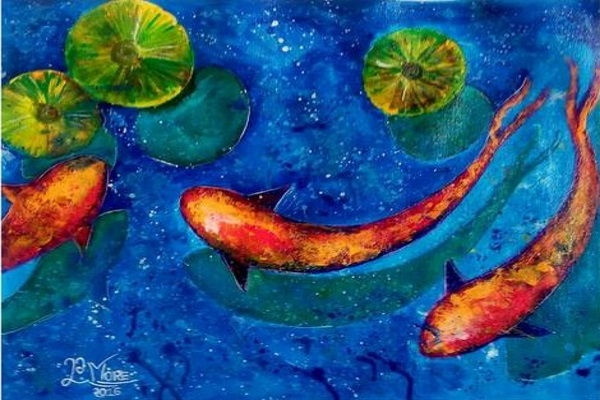
Online art galleries have revolutionized the art world, connecting artists, collectors, and art enthusiasts worldwide. These virtual platforms have made Indian paintings accessible and opened new avenues for emerging artists. Online galleries offer immersive experiences through virtual reality exhibitions and AI-driven recommendations. They also preserve cultural heritage through digital archives and provide accessible education. The future of Indian art in the digital age looks promising, with continued advancements in technology and innovative trends. These platforms foster connectivity, appreciation, and the preservation of India's rich artistic legacy in the global art community.













